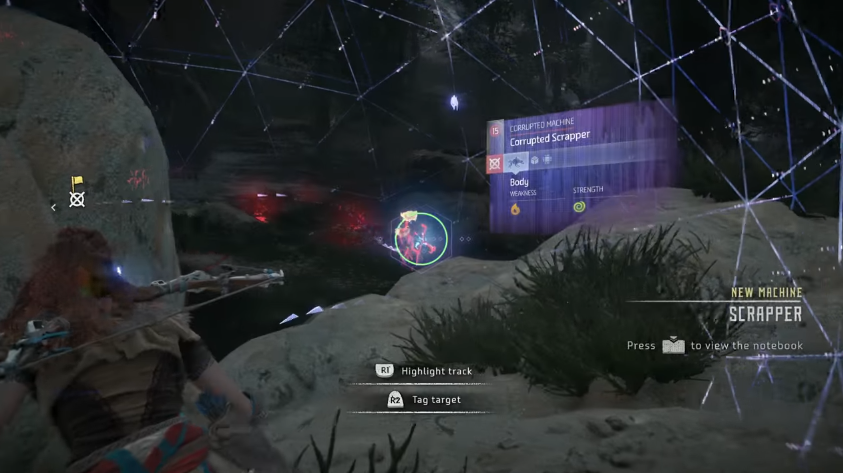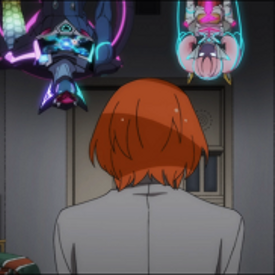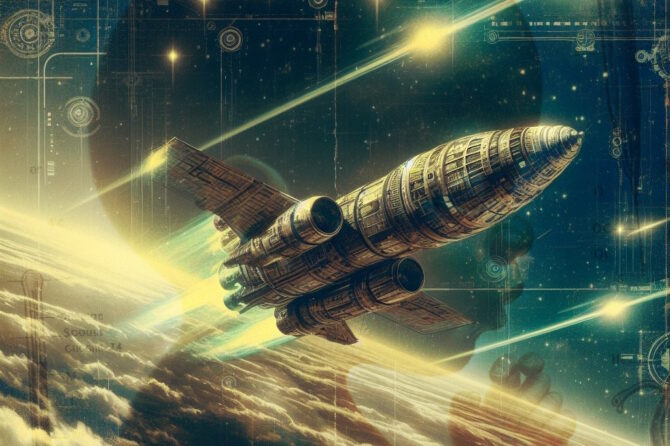
If you’ve got kids, you’ve done a bit of googling. These days the origin of phrases, of objects or patterns or names is much less a mystery than it was even twenty years ago. When your kid comes up with a question like “who invented the screwdriver” you know where to go, you know the answer’s gonna be there somewhere and, chances are, you’re kind of interested to know yourself.
But in science fiction, this kind of research introspection is often in short supply. Not only because it means rabbit-holing in a fashion that can derail the tightness of the narrative, but also because a certain amount of fuzzyness allows the story to evolve in new ways as it continues. Storytelling is full of “retcons”, where an author said one thing in Book 01 or Episode 01 and then had to walk it back in Book 03 or Episode 25, either due to an evolving plot or evolving science in the real world. Couple this with a reader/player’s boundless ability to fill in the gaps with their own knowledge and expectations and you have a recipe that benefits more from handwaving than accuracy.

In last month’s article, I had made a clear delineation between the three most common ways in which forerunner technology shows up in science fiction videogames. The first was as “Set Dressing”, where the technology forms a pretty backdrop and comprises some of the lore, but otherwise serves no other function. The second was “Excuse”, where the tech is a narrative force, either though lore and backstory or as the basis for supremely advanced technology but doesn’t really change the methods by which the game is played. The third, and the topic of today’s article, is “game mechanics”, where the technology and thought processes of said forerunners is an integral part of the methods by which the game is played. This last one is fairly rare in games, particularly in the AAA space, but there are a few who pull it off.
Horizon Zero Dawn is a Playstation 4 exclusive game that nails this third example. In many ways this game exemplifies the current best of the “forerunner” storylines present in games and lays bare the tendencies of humanity to turn history into “story” given enough time and generations.
At first glance this game appears to be a fairly straightforward skills-based action game. You are introduced to the current state of the world through a training level as a child. Much like all children you learn about what you can and cannot do by promptly sticking your foot in something forbidden. That forbidden element turns out to be an impromptu exploration of the abandoned forerunner tunnels near your home. An exploration, in fact, that gifts you a piece of ancient technology that will become an indispensable gameplay element as your work your way through the storyline. The Focus.
KEY CONCEPT: The Heads-Up Display
Now, here’s the thing. At this point of the game the forerunner technology is still basically an excuse. The bit of engineering is a heads-up display tool called the Focus. It gives you a menu system through which you can access your character stats and upgrades, it gives you the extra insight and information on the bad guys and it allows you to access essential backstory elements like crew logs and recordings. There are a lot of ways that this gets handwaved in games, from Issac’s projected display in Dead Space (as seen below) on through through no-seeum (displays only visible to the player, not their avatar) displays in fantasy RPG’s like Skyrim.

In the training area of Horizon Zero Dawn, despite the Focus’ overall immersiveness compared to other games, it is still merely a tool to deliver information, it’s not really a piece of the action. It is, at the outset, simply an Excuse. Forerunner technology used to gin-up the common player interface menu. However, by combining this tool with your player’s natural gift for mayhem, it will eventually become an integral part of just how you play the game.

As we get deeper into the game you start actively utilizing the rest of the forerunner technology available. The basic “sneak up and hunt things bigger than you” gameplay is a standard set of mechanics underpinning similar action/rpg games like Far Cry. By giving you the Focus, Horizon Zero Dawn starts you down the road to more options by allowing you to use the forerunner technology to your advantage.
As you progress through the game, you develop the tools to Override the now-feral machines, harnessing them and turning them into allies. This gives you a key advantage in encounters where you are facing multiple opponents, your robot-ally will defend you unto it’s vicious and sparkly death. It is, in fact, a version of this Override tool that allows to to deliver the coup de grâce to the final in-game boss.
KEY CONCEPT: What Killed the Forerunners
Like most modern adventure games the player gets to choose their path. These types of games are no longer designed with only a single set of linear decisions to make. There are hours of exploration and smaller quests available. If you are the type of player who is more interested in engaging with the world rather than chasing completion of the game, there is plenty here to engage you. However, as you go, you become more and more reliant on forerunner technology to complete more and more complex tasks. Tasks that would be nigh-impossible without this technology at your disposal. Your ability to complete these tasks is what gives us the translation from forerunner technology being simply an Excuse to becoming part of the gameplay.
Now, I will point out that, as a player, you’ve always had a “mission”. You may not have known what the end-game is quite going to look like, but like all stories, Horizon Zero Dawn has an ending. Part of your meta-goal as a player is to reveal what it is. In any narrative where forerunners are a key part of the gameplay, figuring out what happened to them, what killed them or how they evolved is a key element. In games, the goal is often to either A. defeat this same evil (i.e. prove that humanity has evolved past the forerunner’s shortcomings) or B. set your feet upon the same path (i.e. prove that humanity is worthy of the same kind of grand ascension to a higher state of being).

It’s interesting to note that most of the time forerunner civilizations either nuke themselves out of existence (via nukes or some other planet-glassing tech) or they ascend to a higher plane of existence. We don’t see as many forerunners who follow the more Earthly pattern of being subsumed into another culture or simply being invaded and taken over. In science-fiction, civilizations don’t just go quietly into the night, they either succumb to their worst impulses or become the best version of themselves and, either way, the POV character is a part of the group that comes after. Usually thousands of years after.
The world of Horizon Zero Dawn has been rebooted, quite literally. With the demise of the machines that drove the forerunner civilization to it’s destruction, the world reverted to a simpler state, one where self-replicating robots filled in niches in the ecosystem and technology of many sorts became vilified.

But as the player discovers over the course of the game, there are other groups in the world that have begun to seek and embrace the forerunner technology, reawakening the old machines to their old humanity-destroying agendas.
WRAP UP
Technology belonging to a forerunner race, whether it be the human race or one from a far-away galaxy is a common science-fiction concept in videogames. In the case of Horizon Zero Dawn, this technology, and your mastery of those pieces of it that still work, are key elements not only of the gameplay mechanics but of the larger game narrative.










